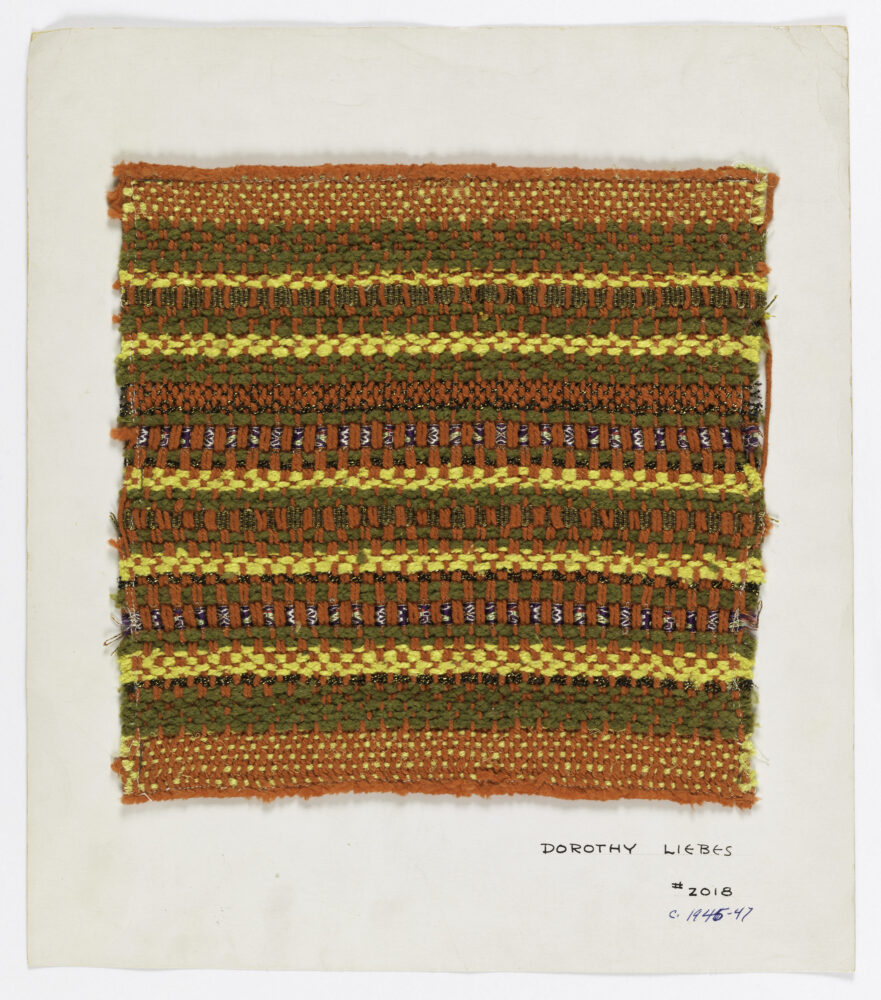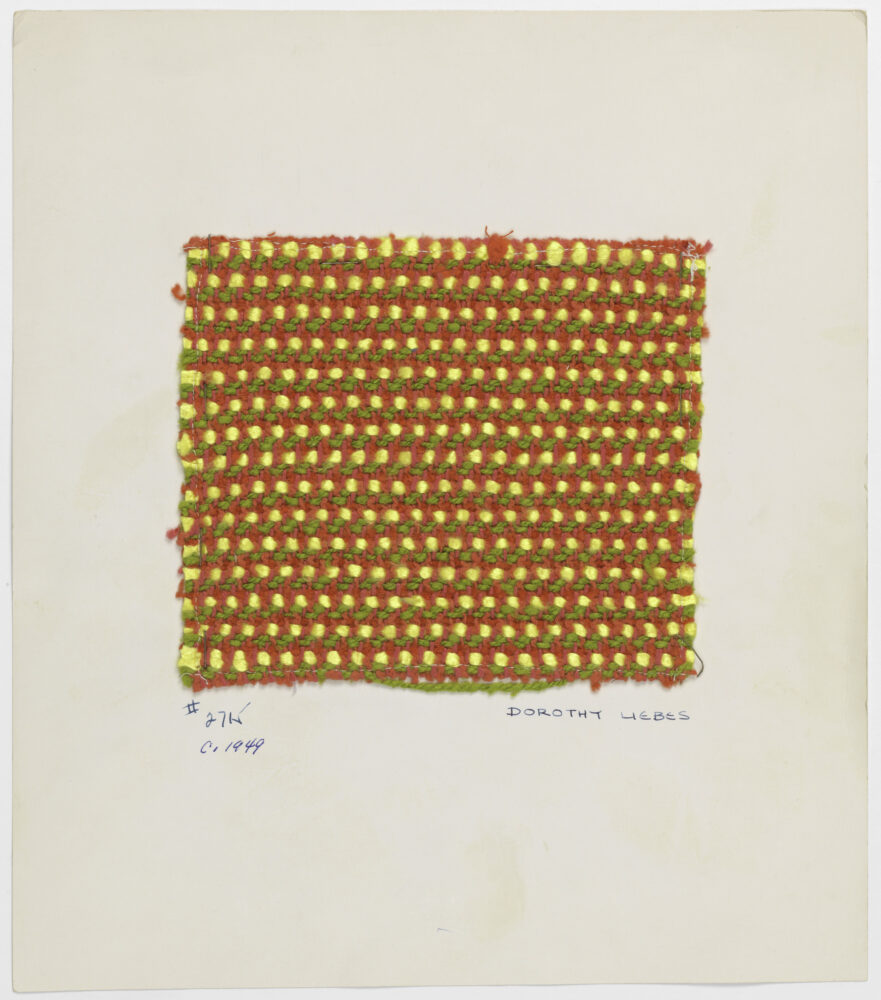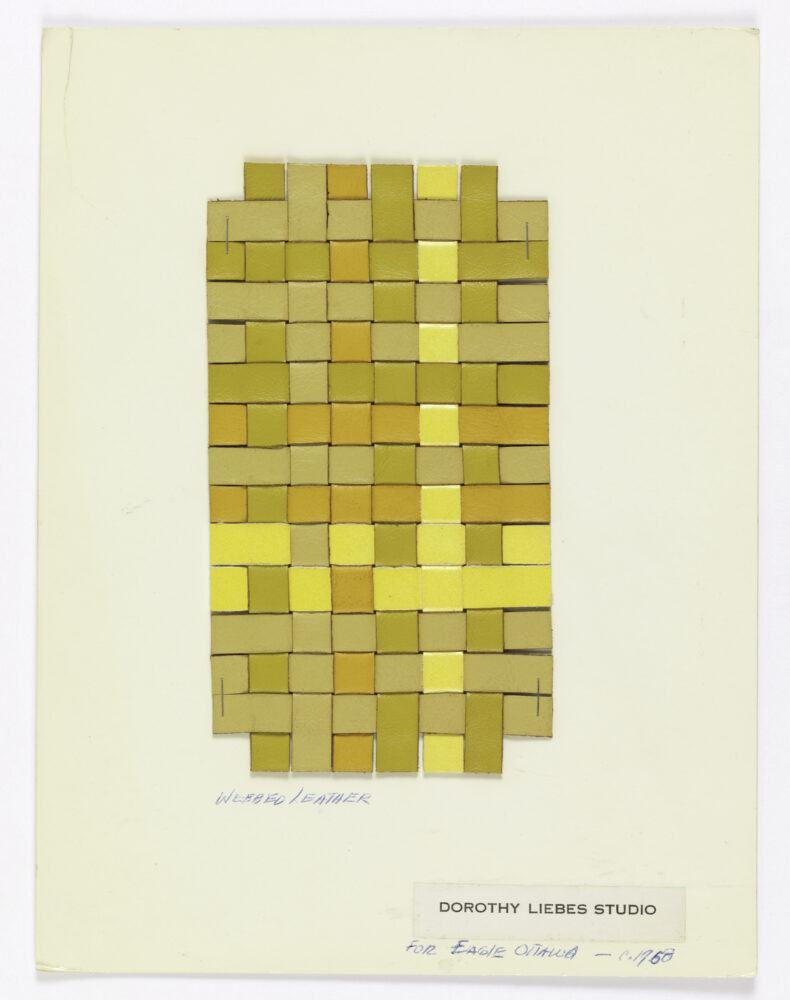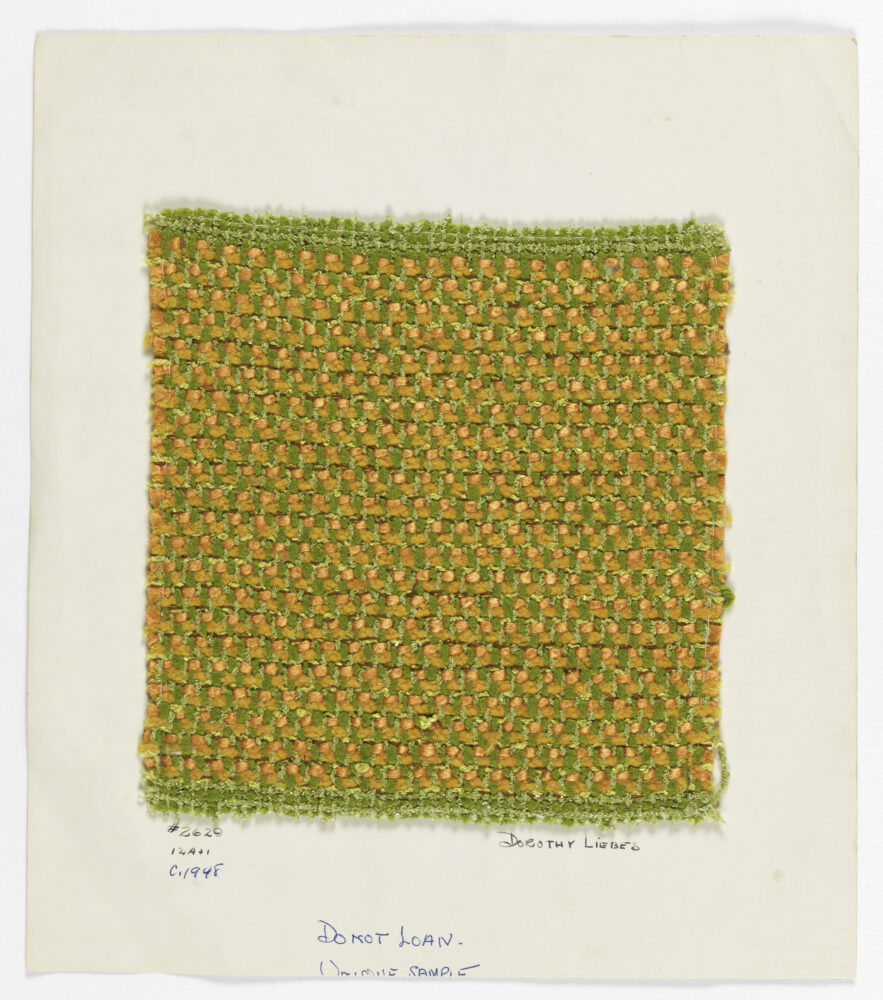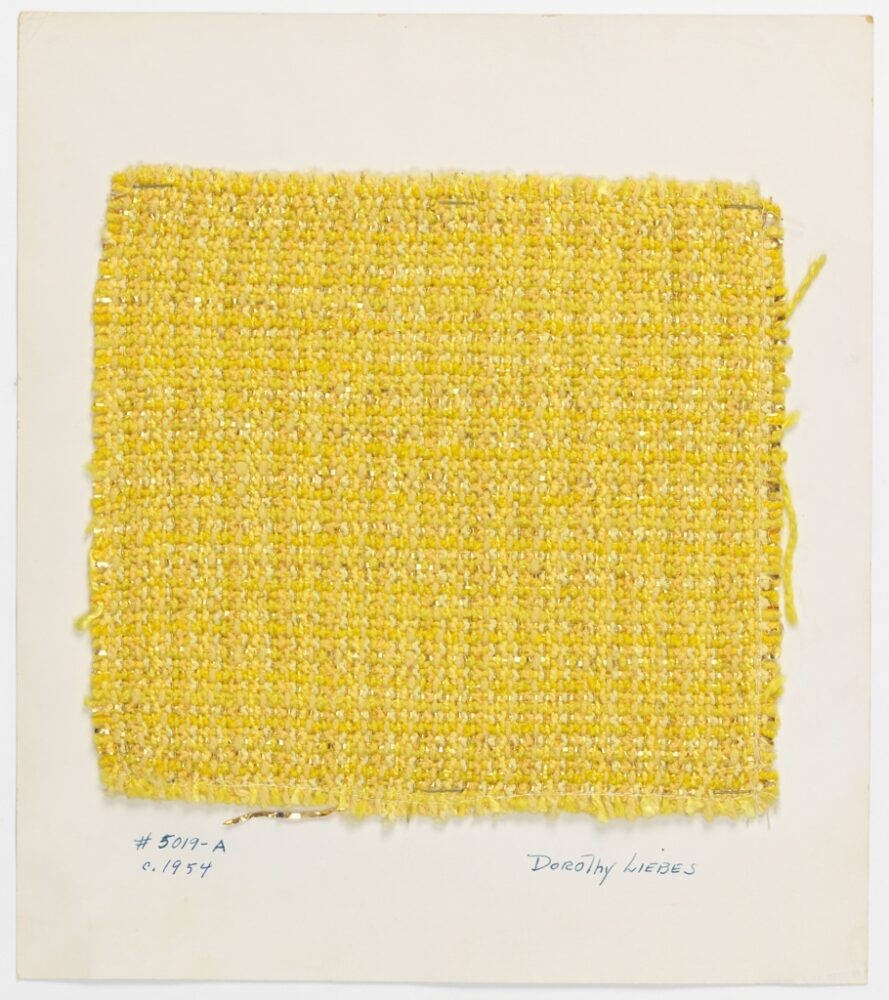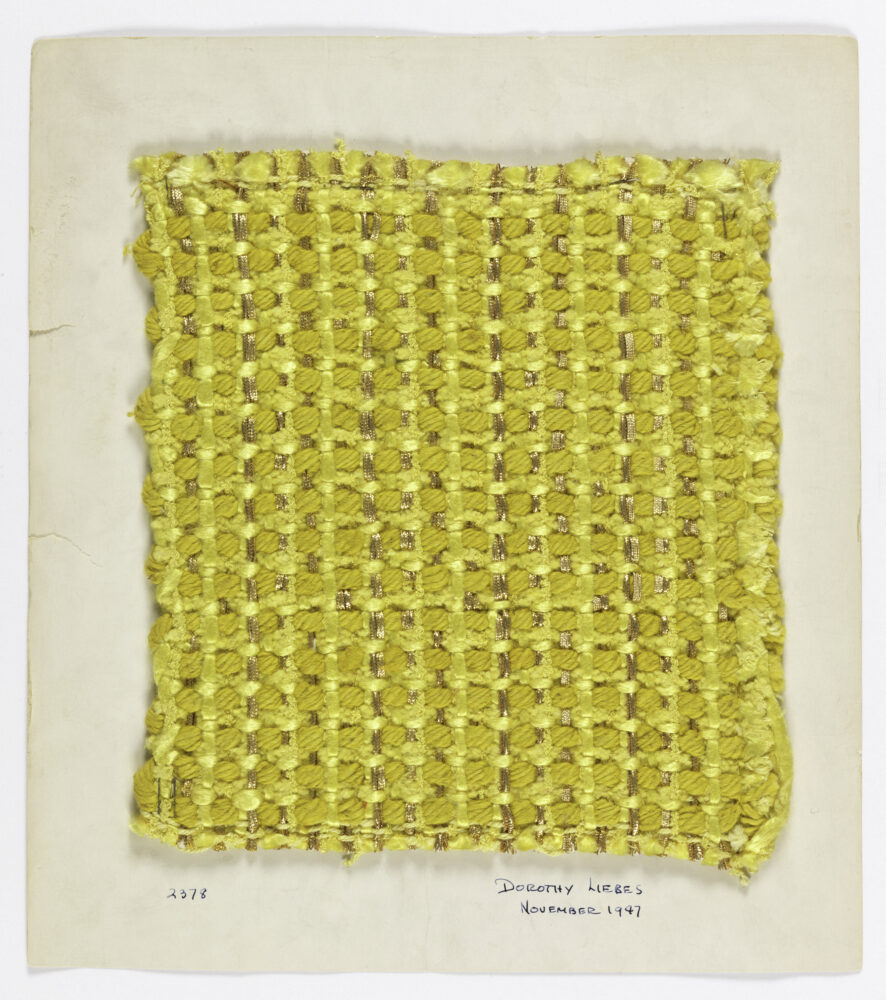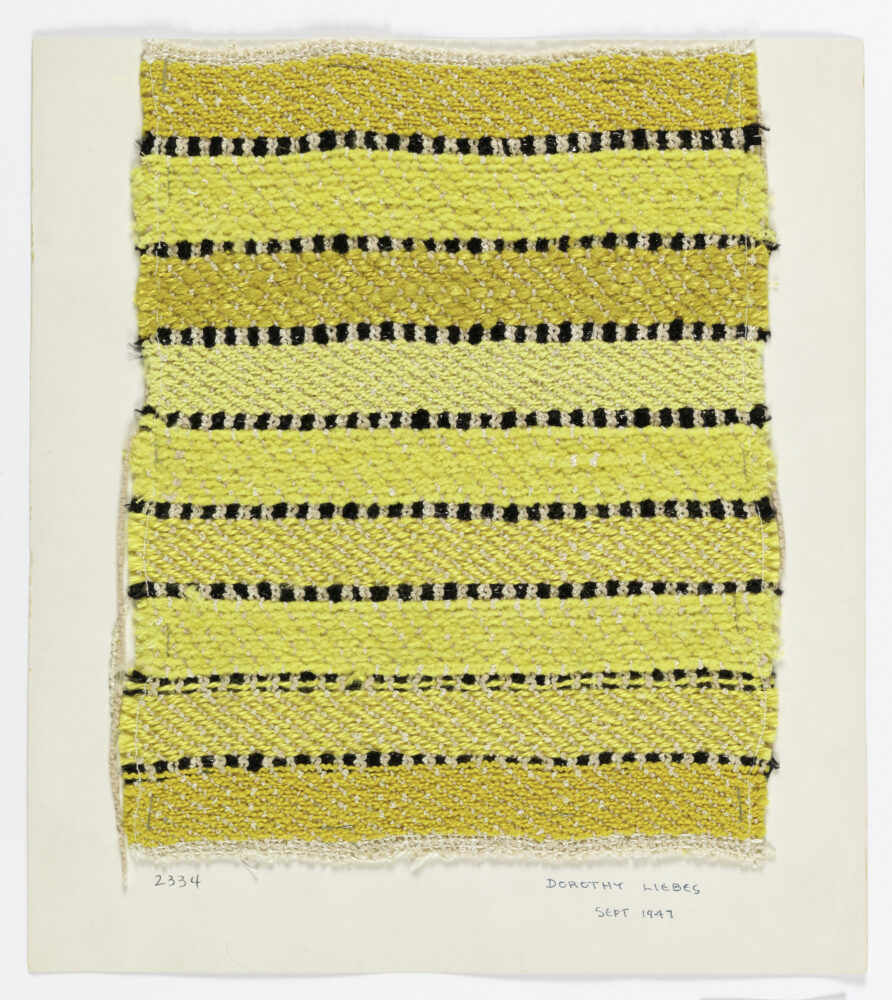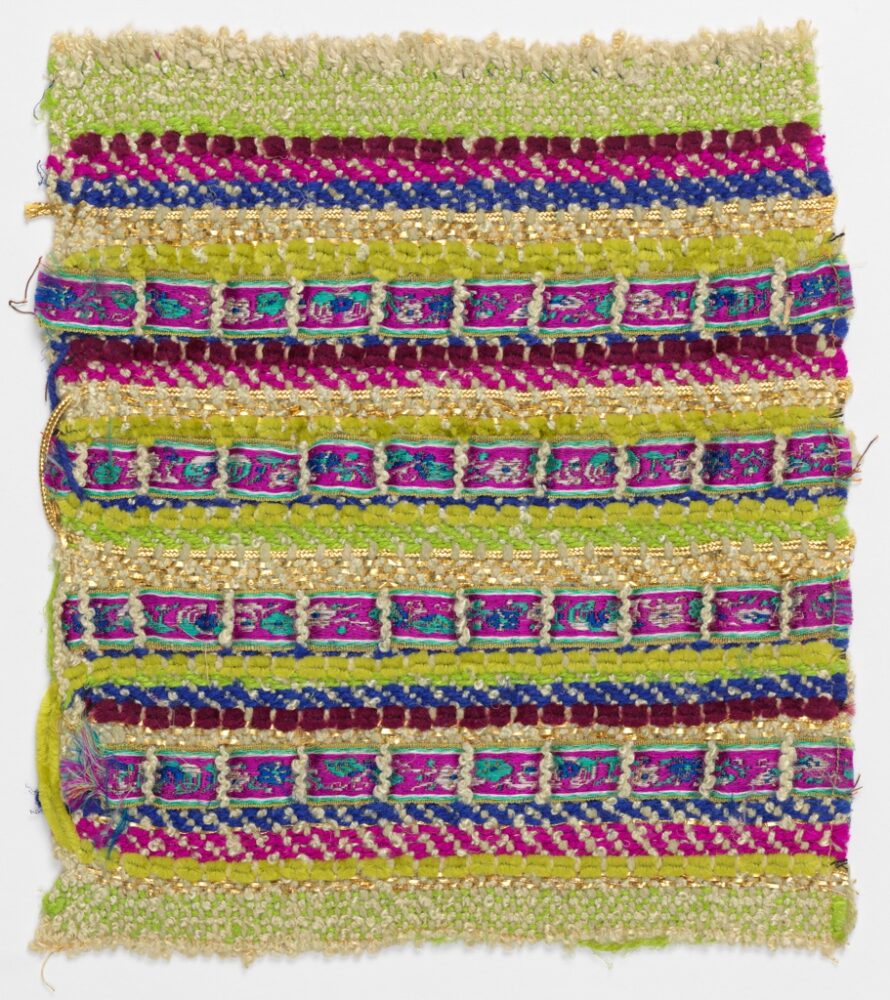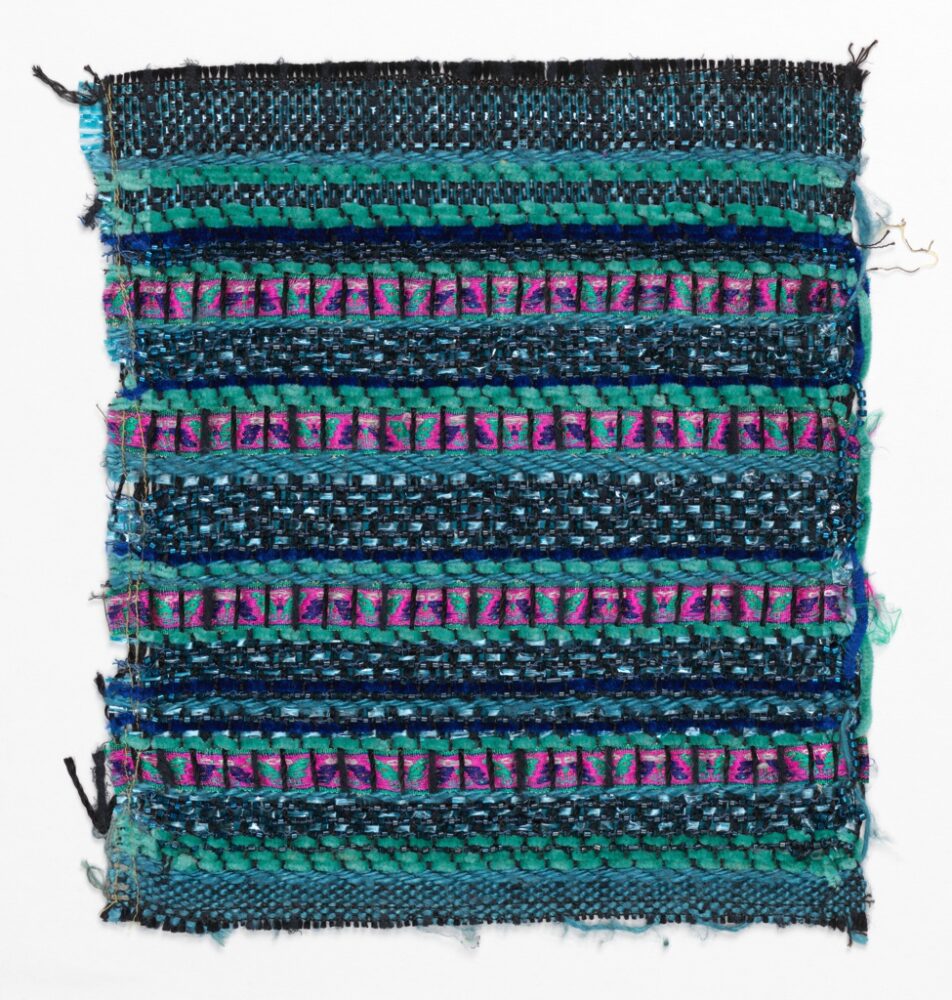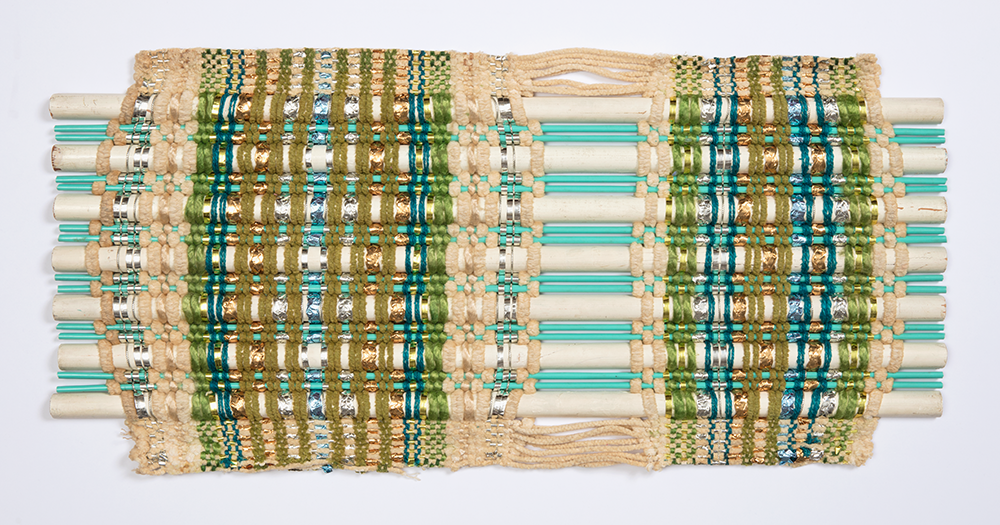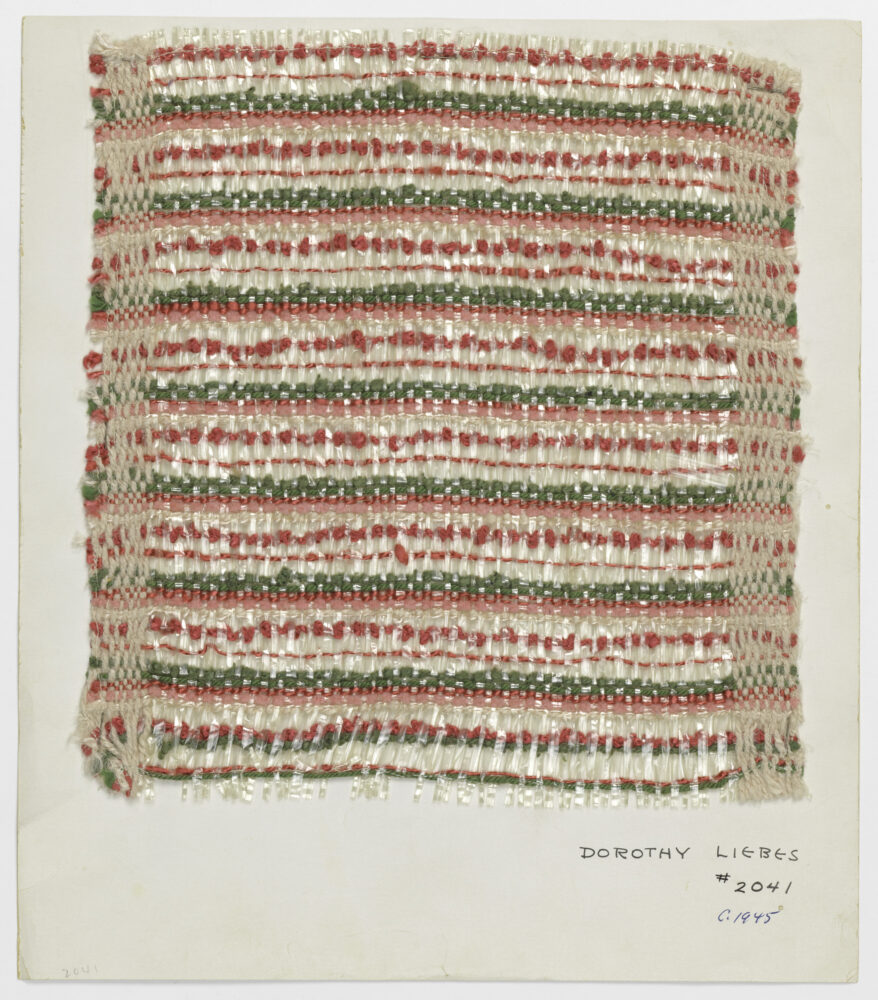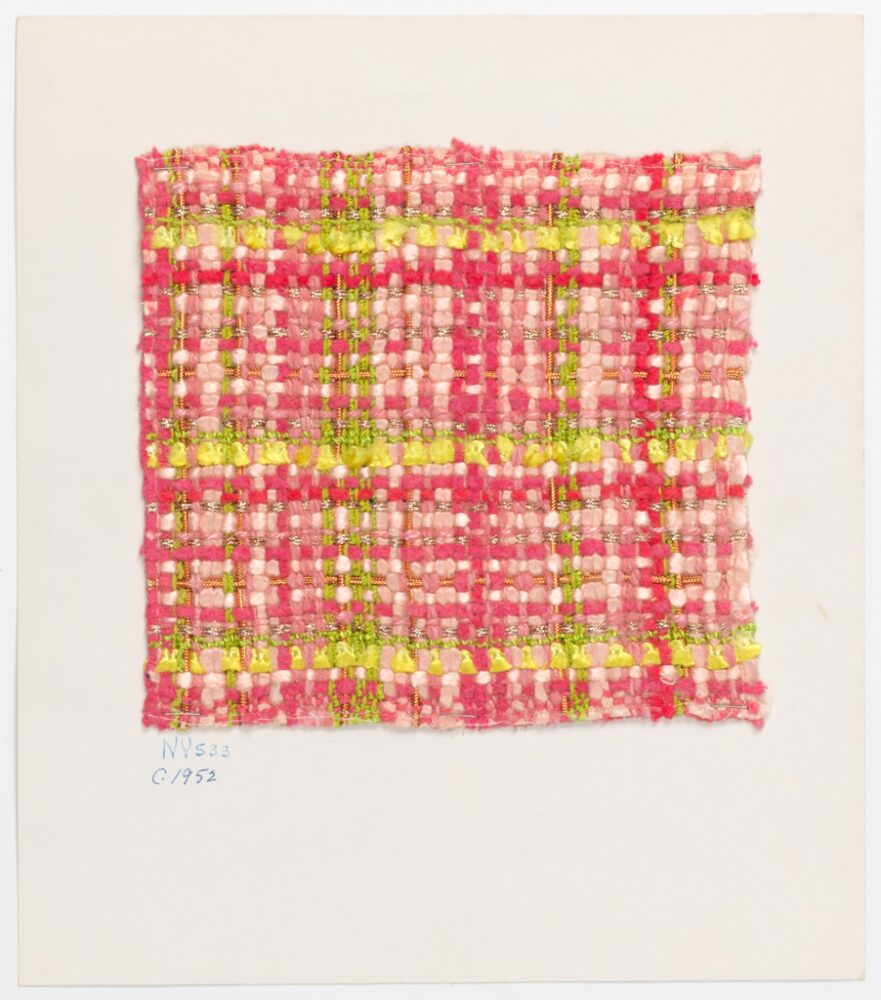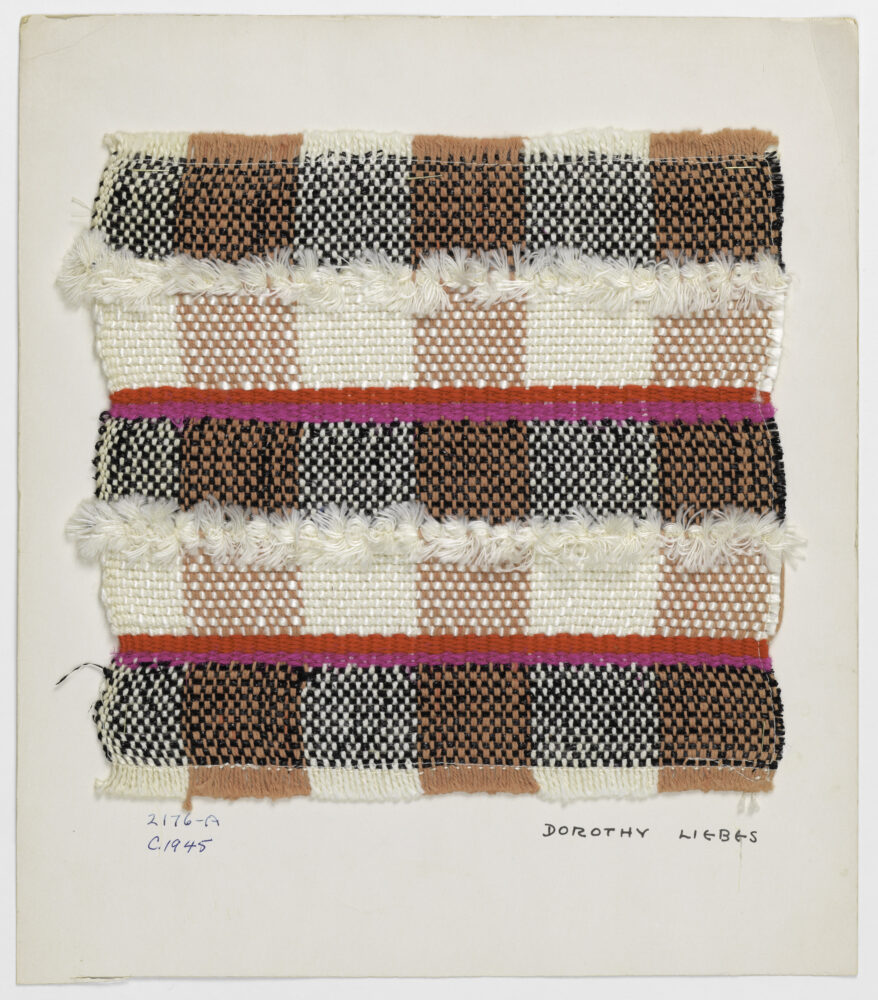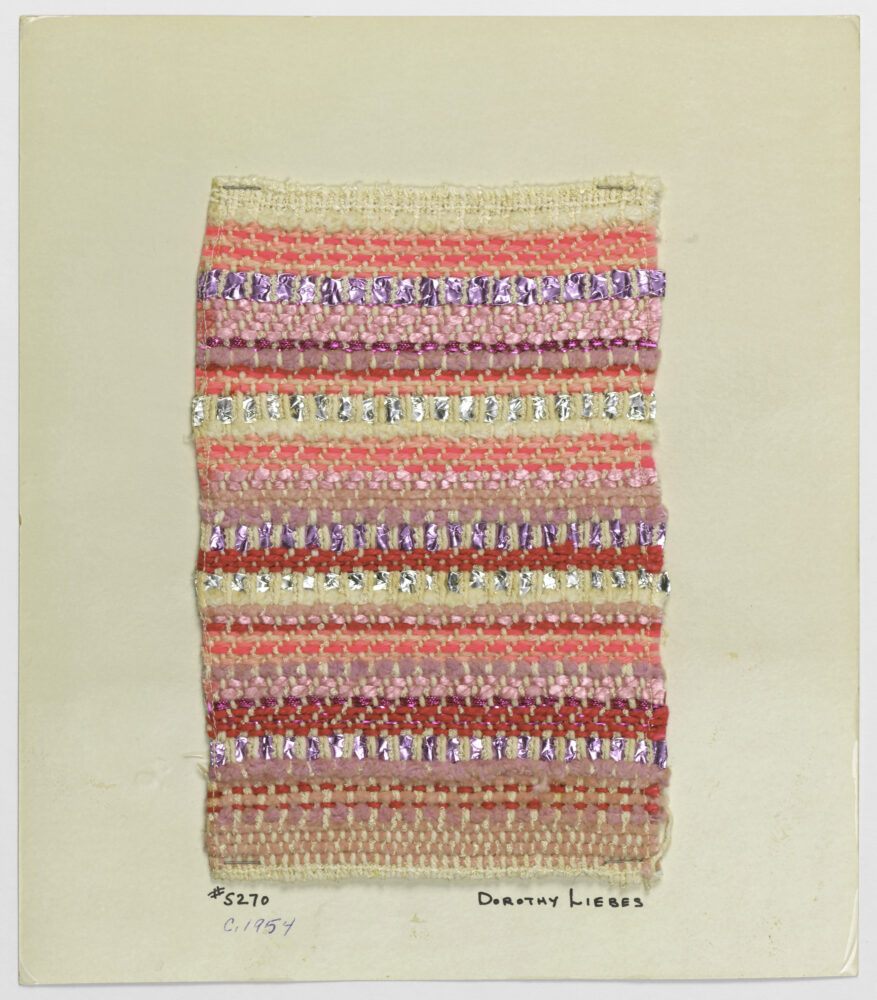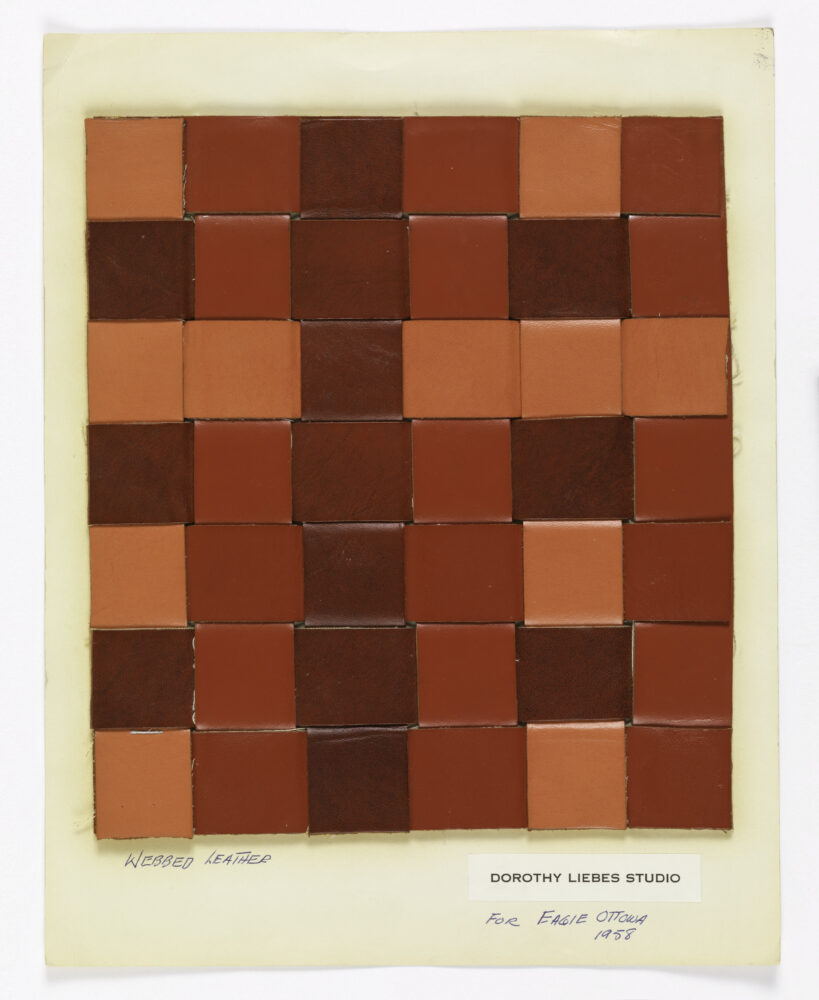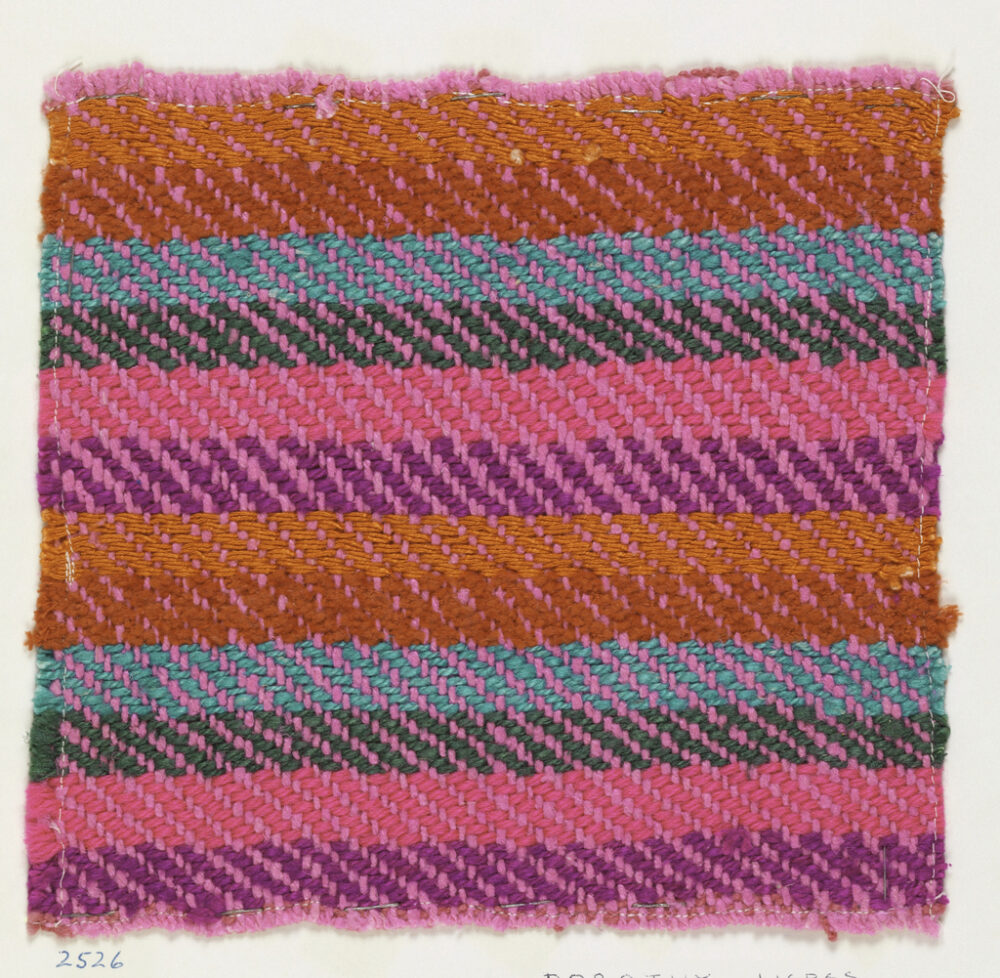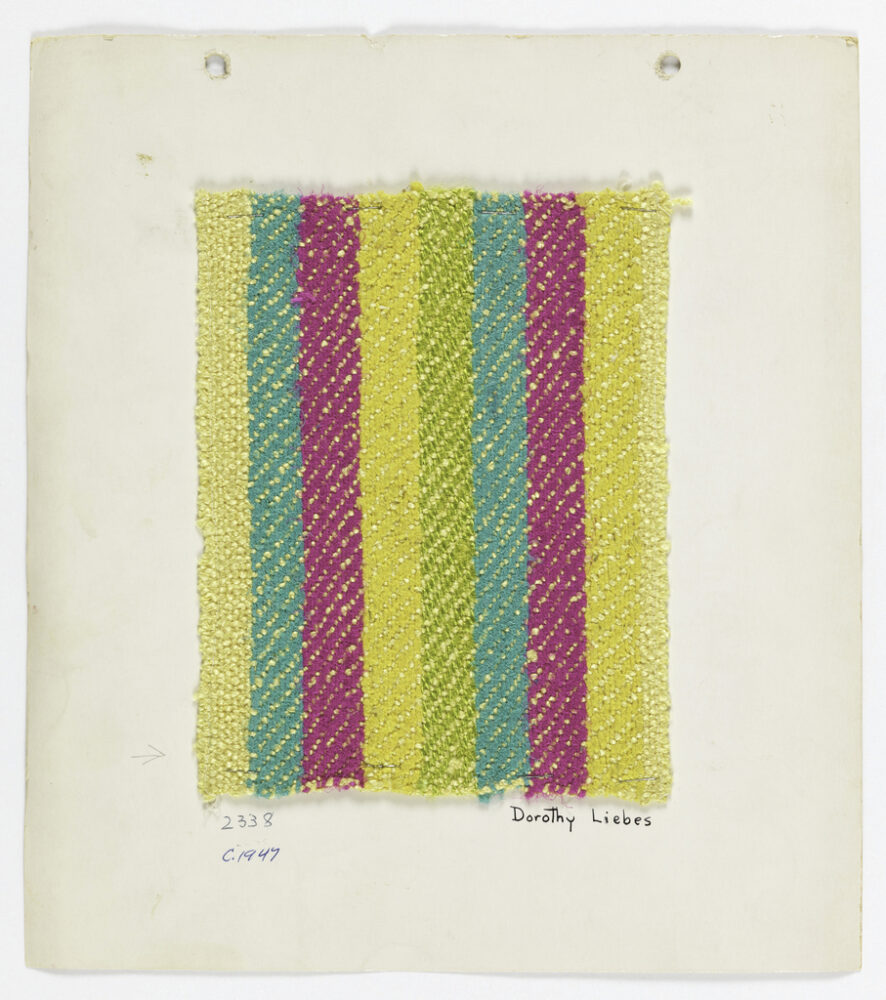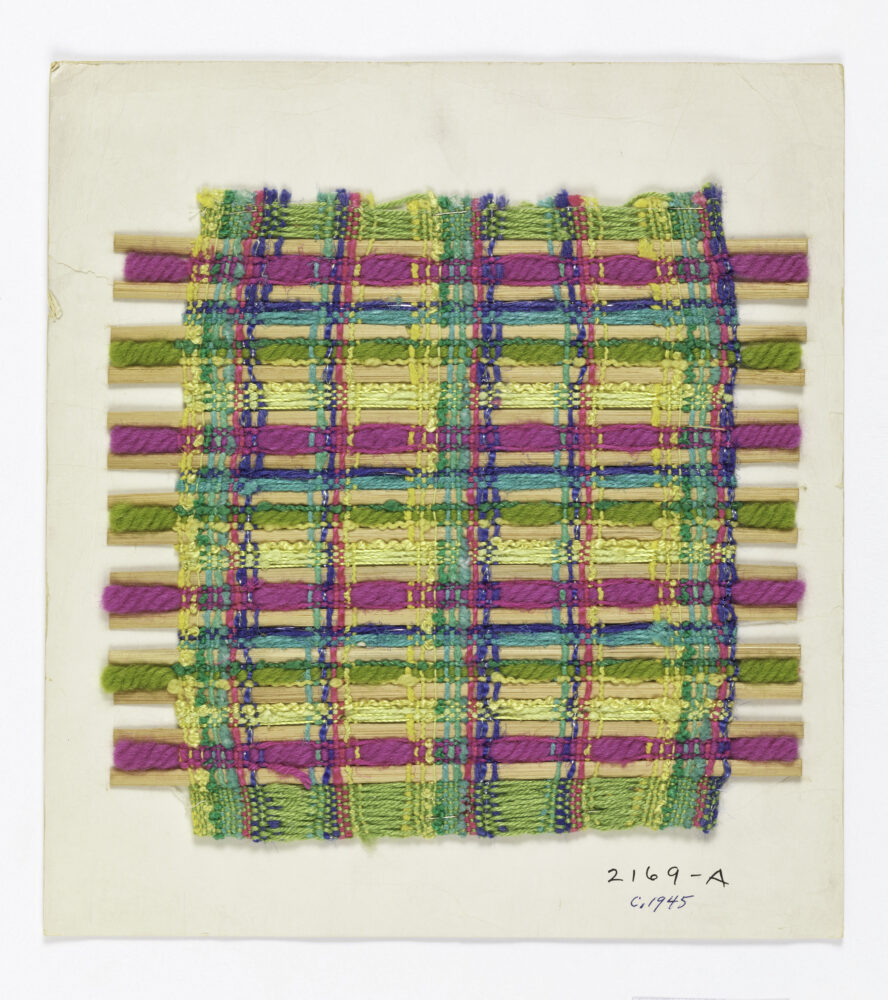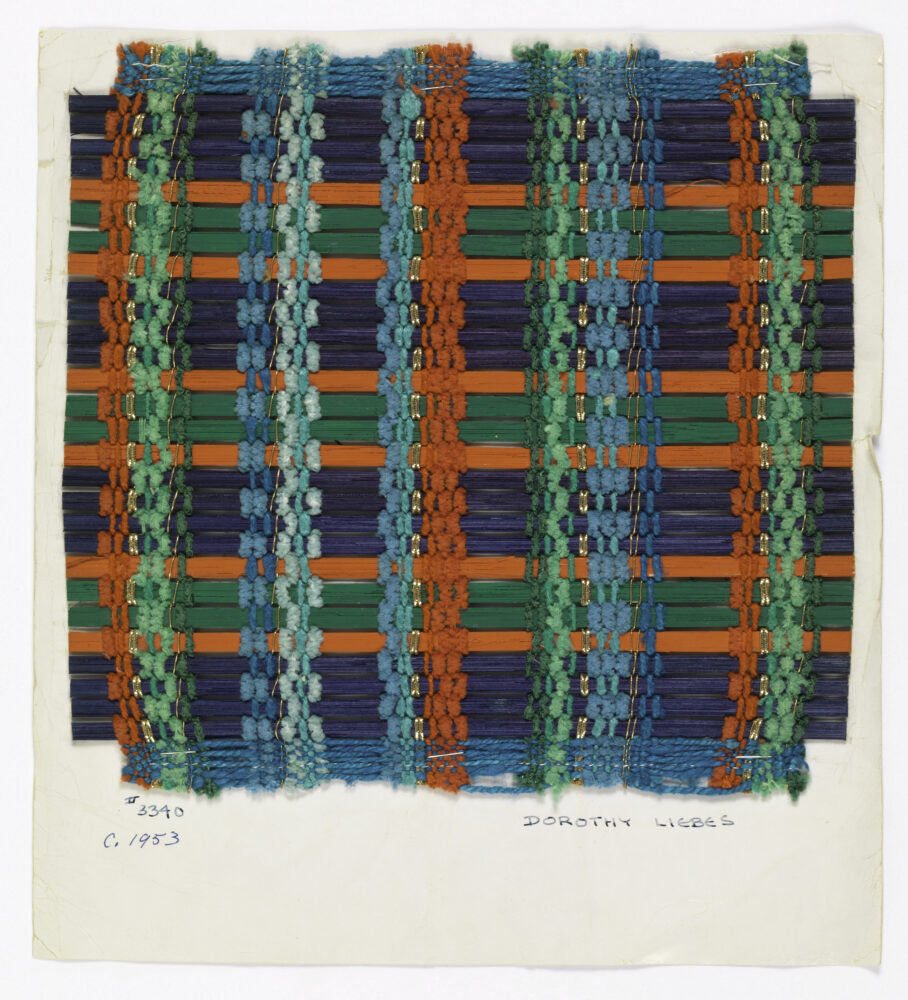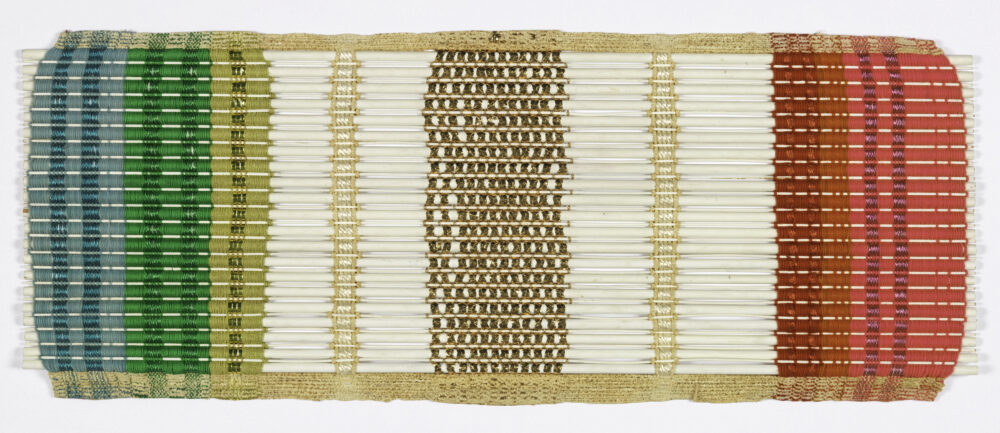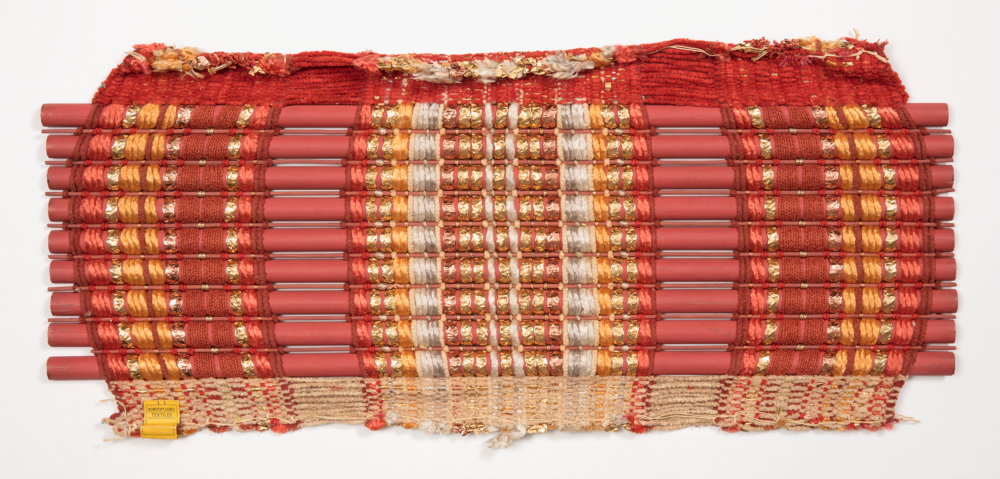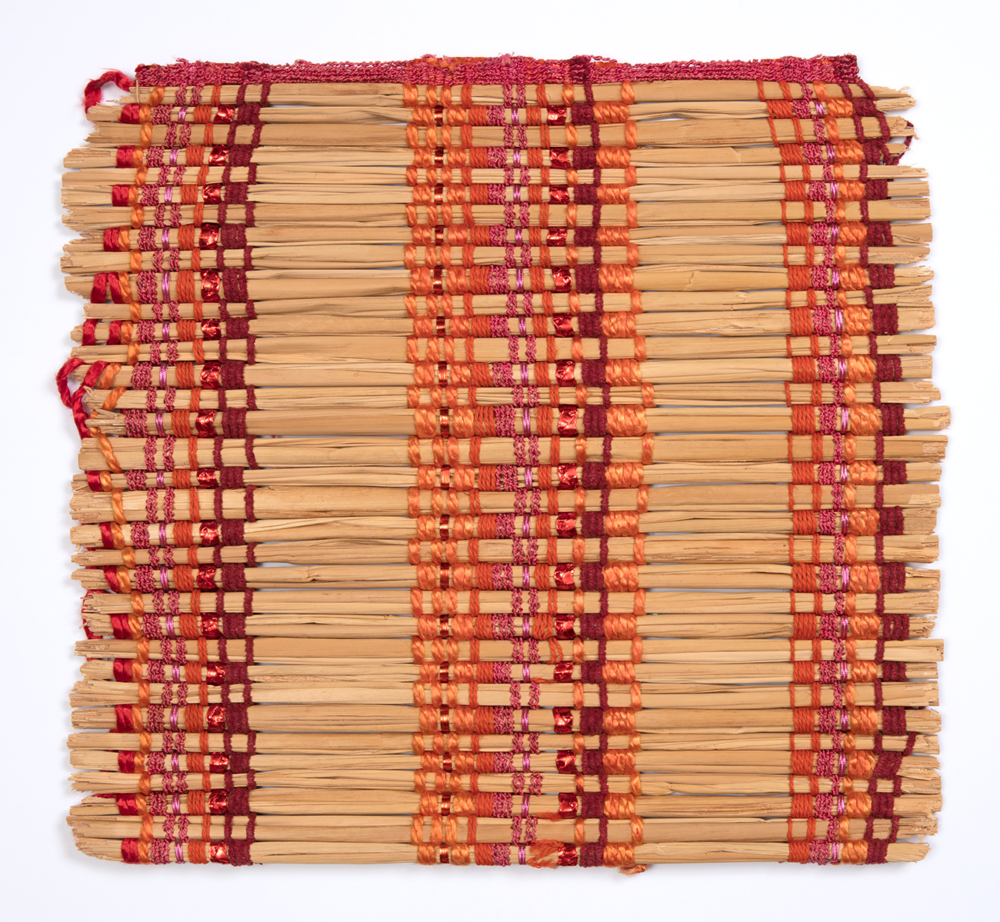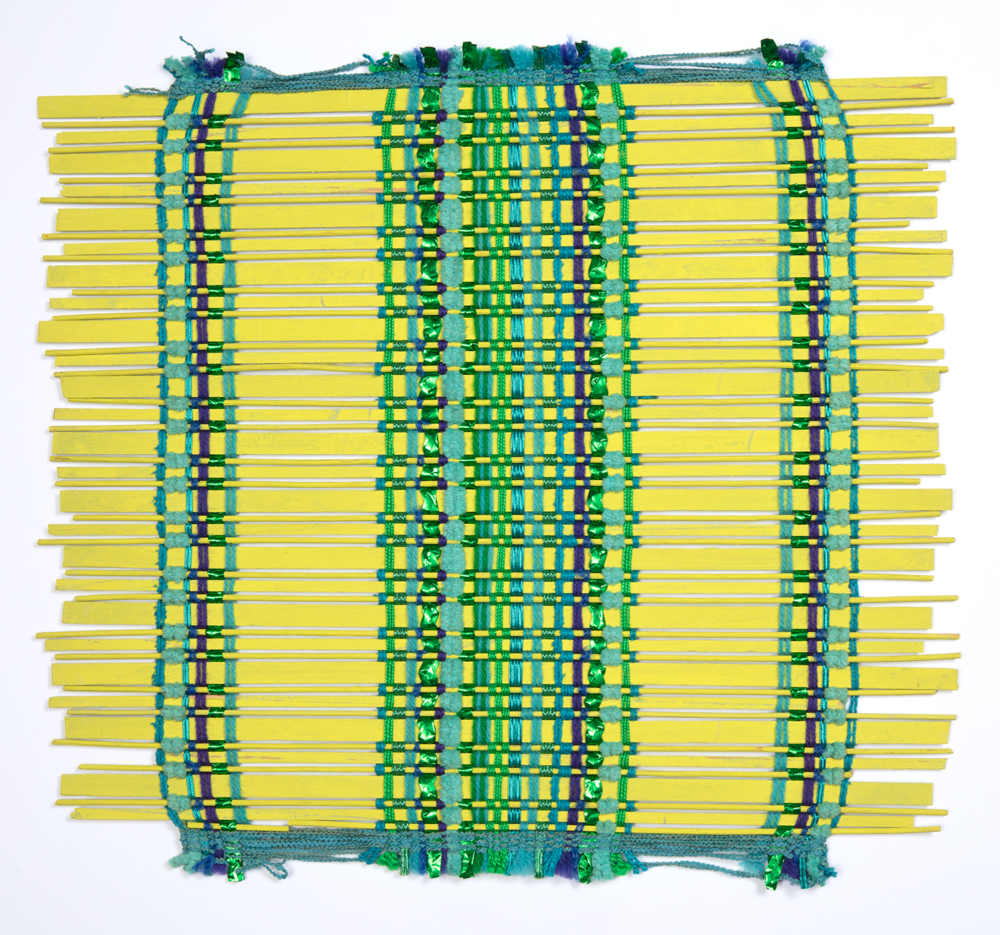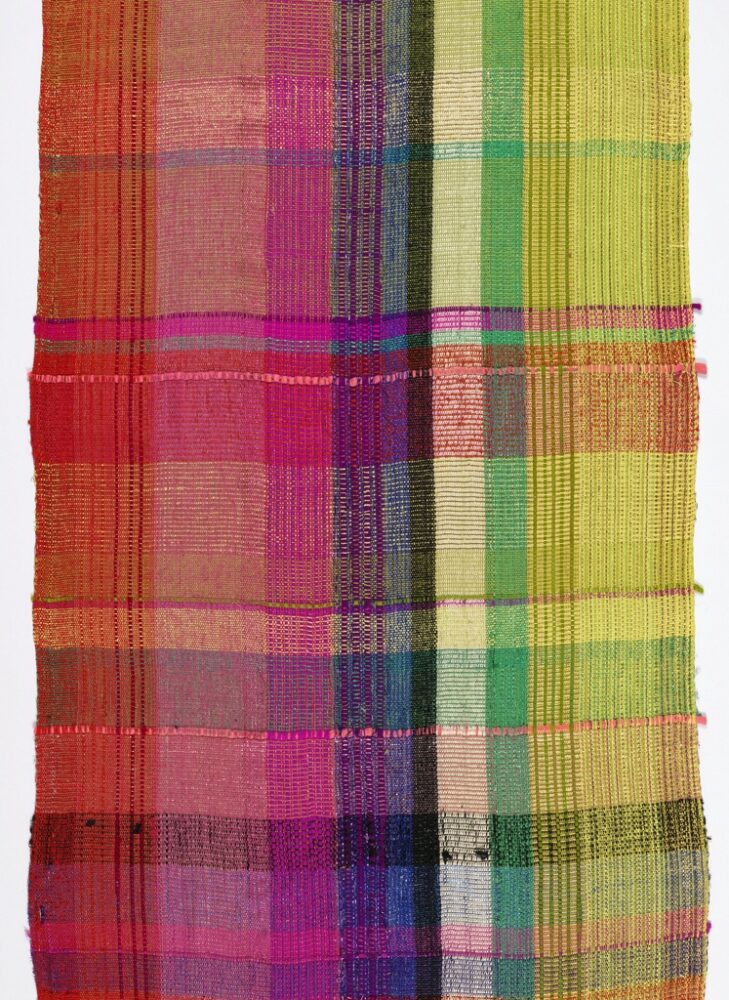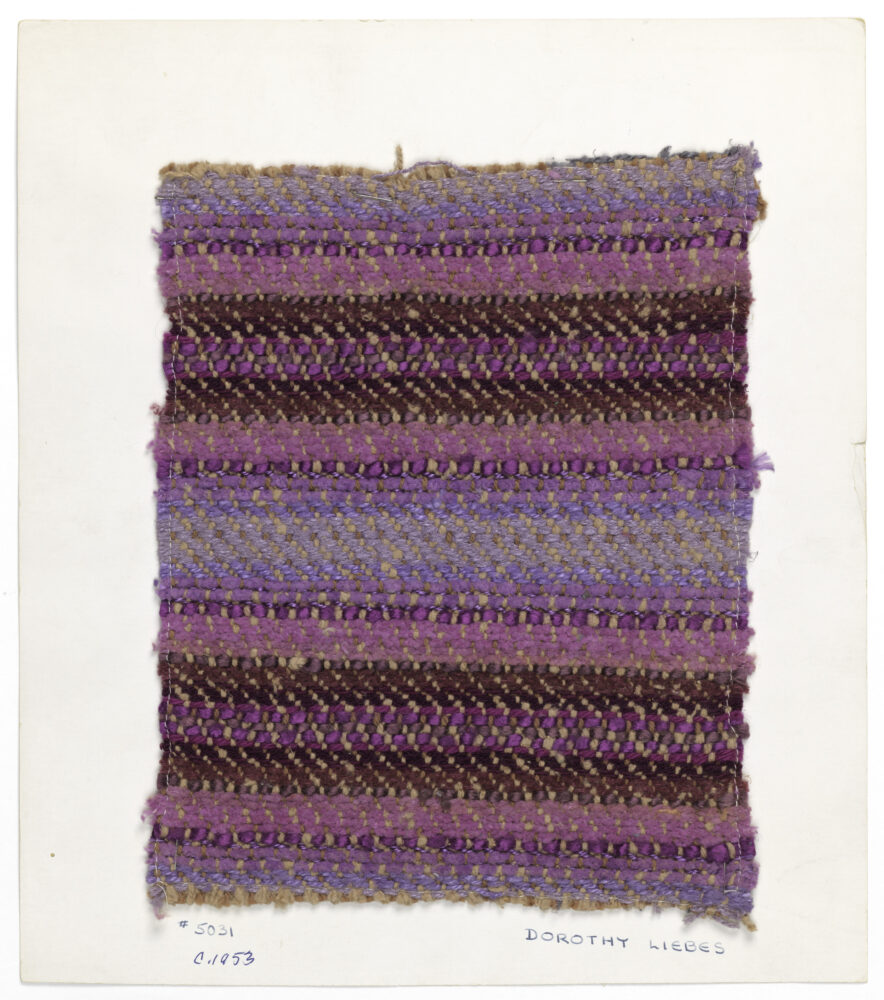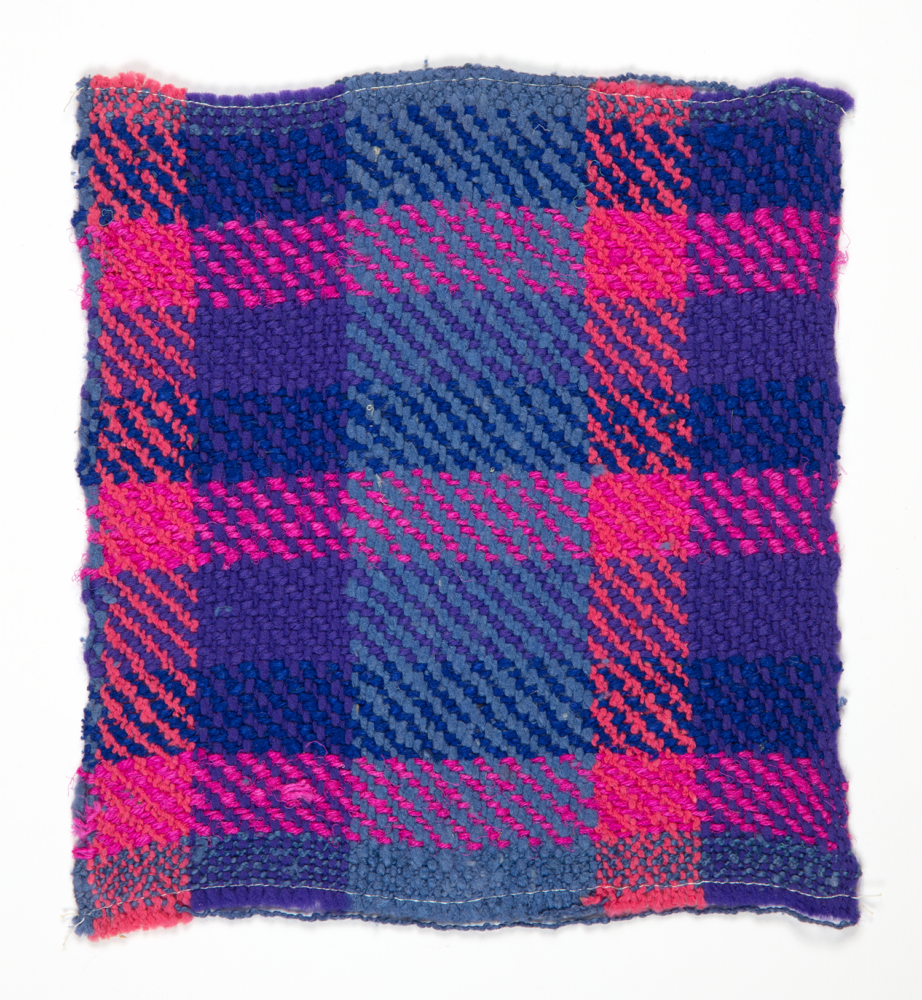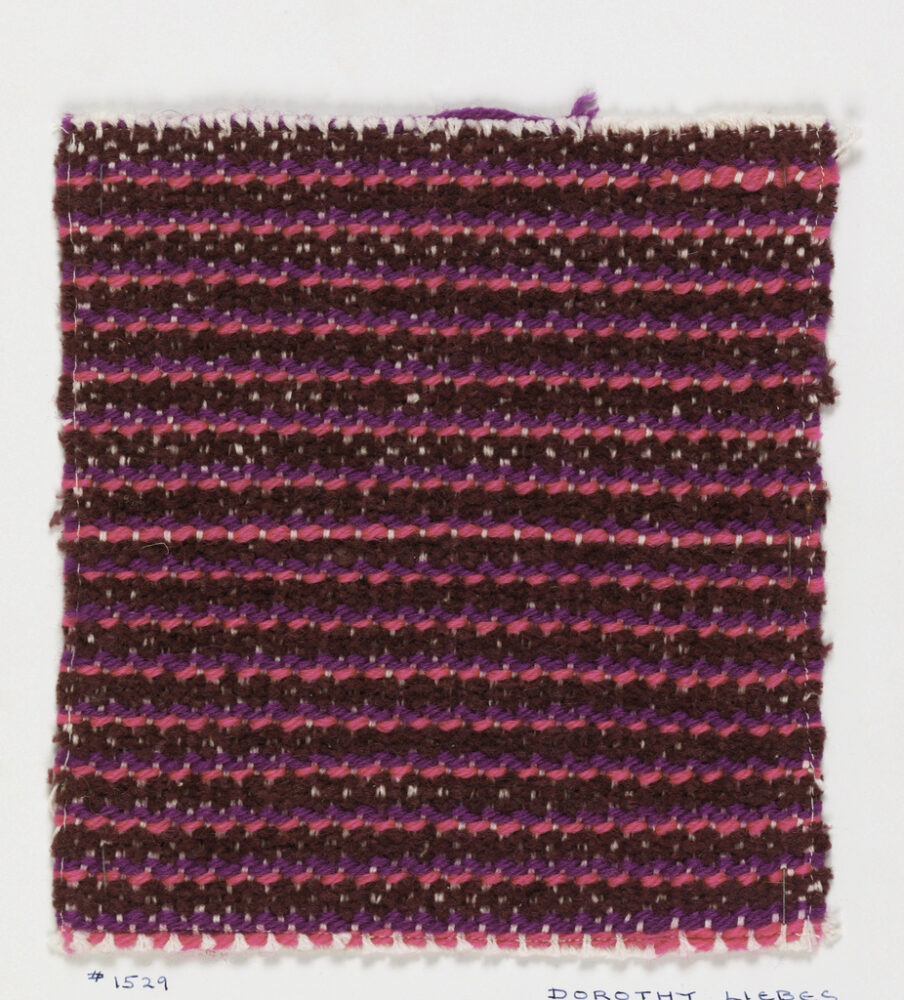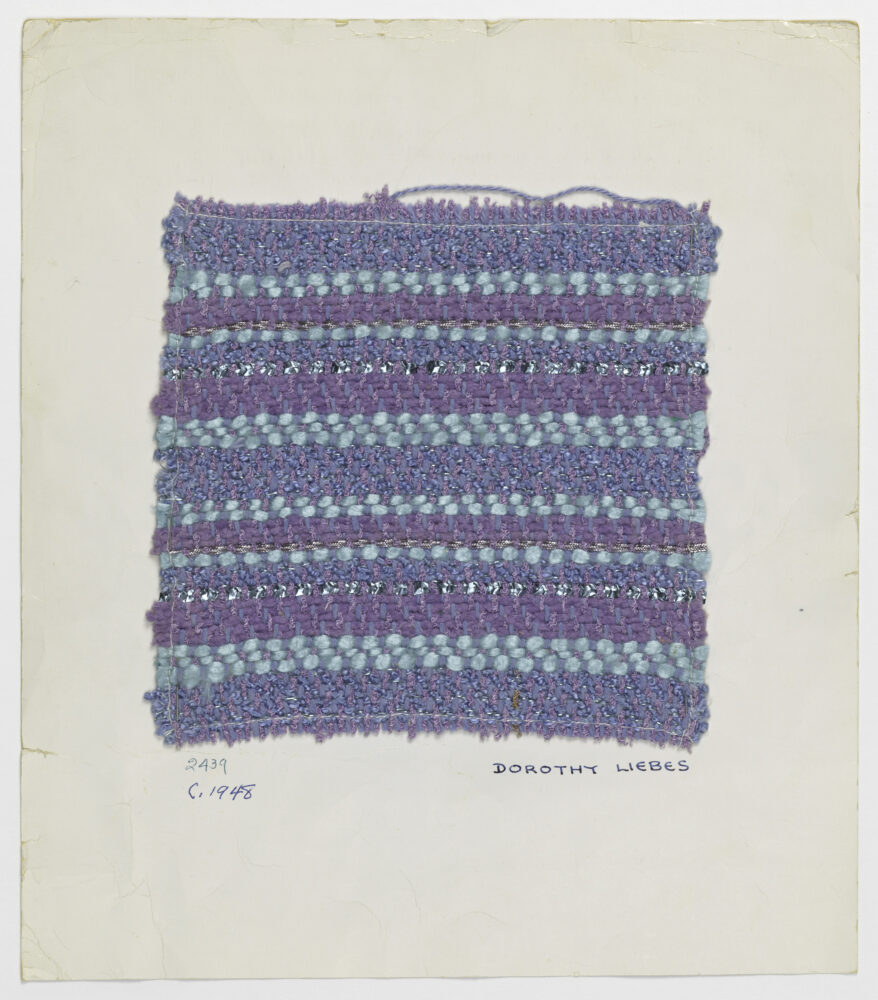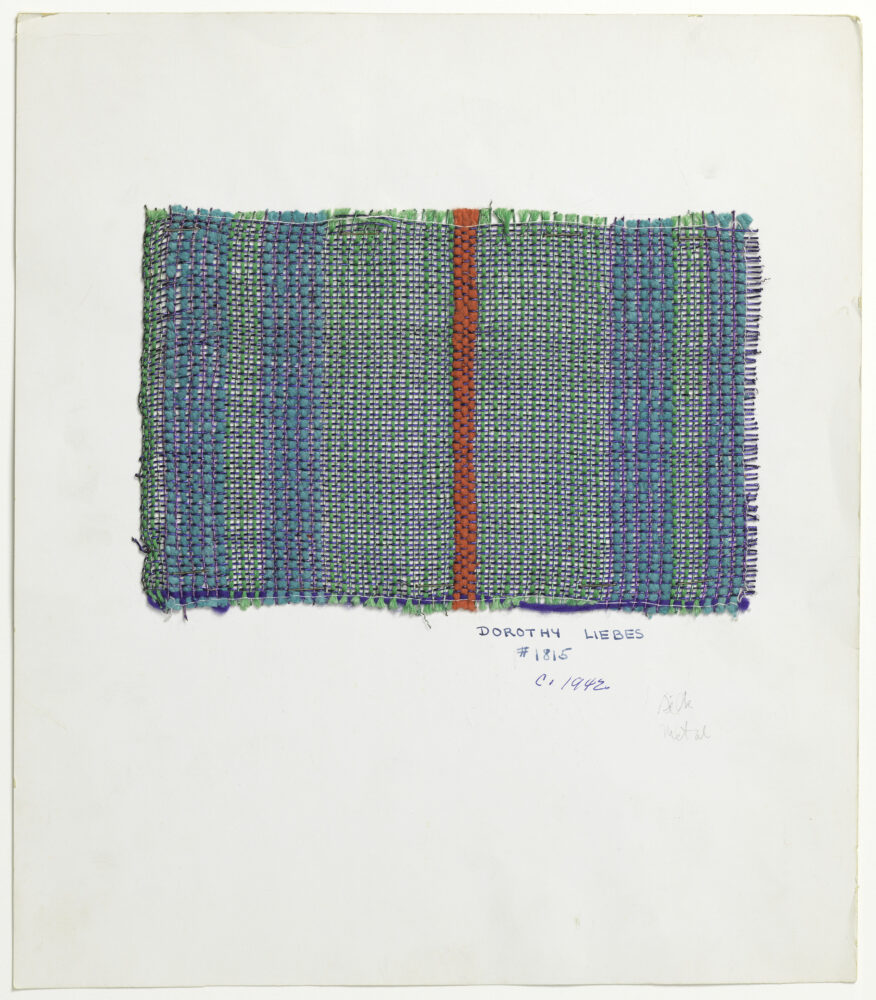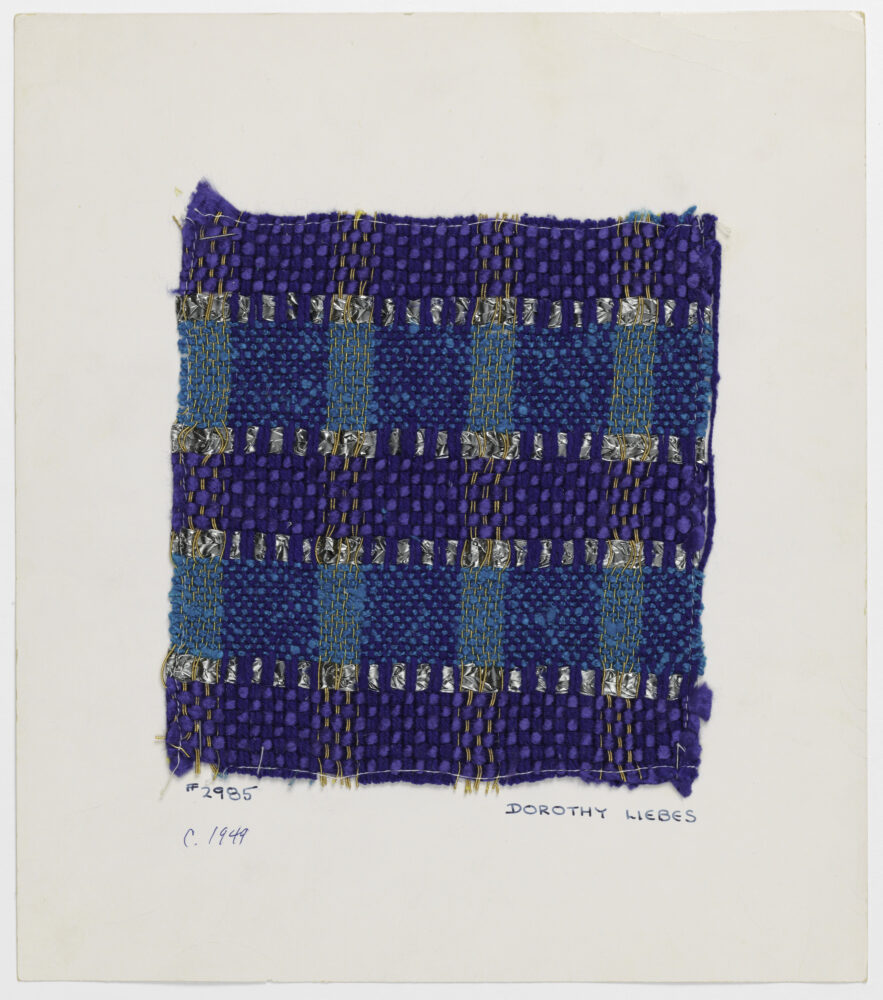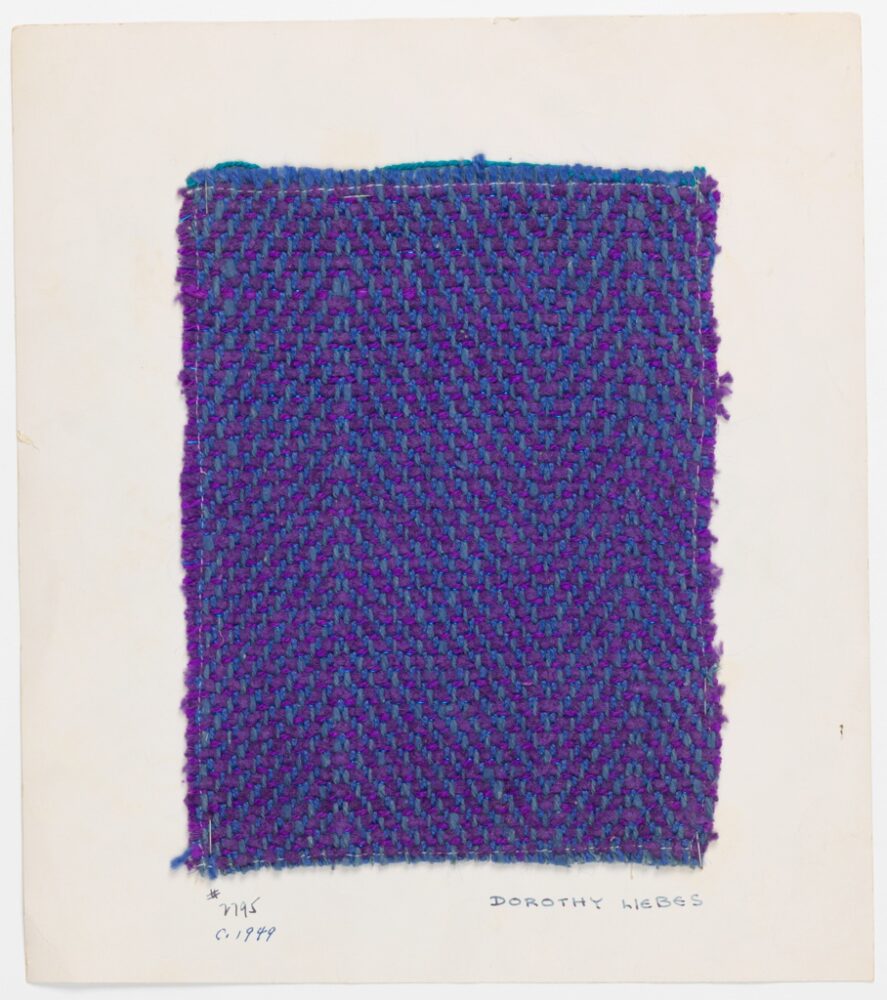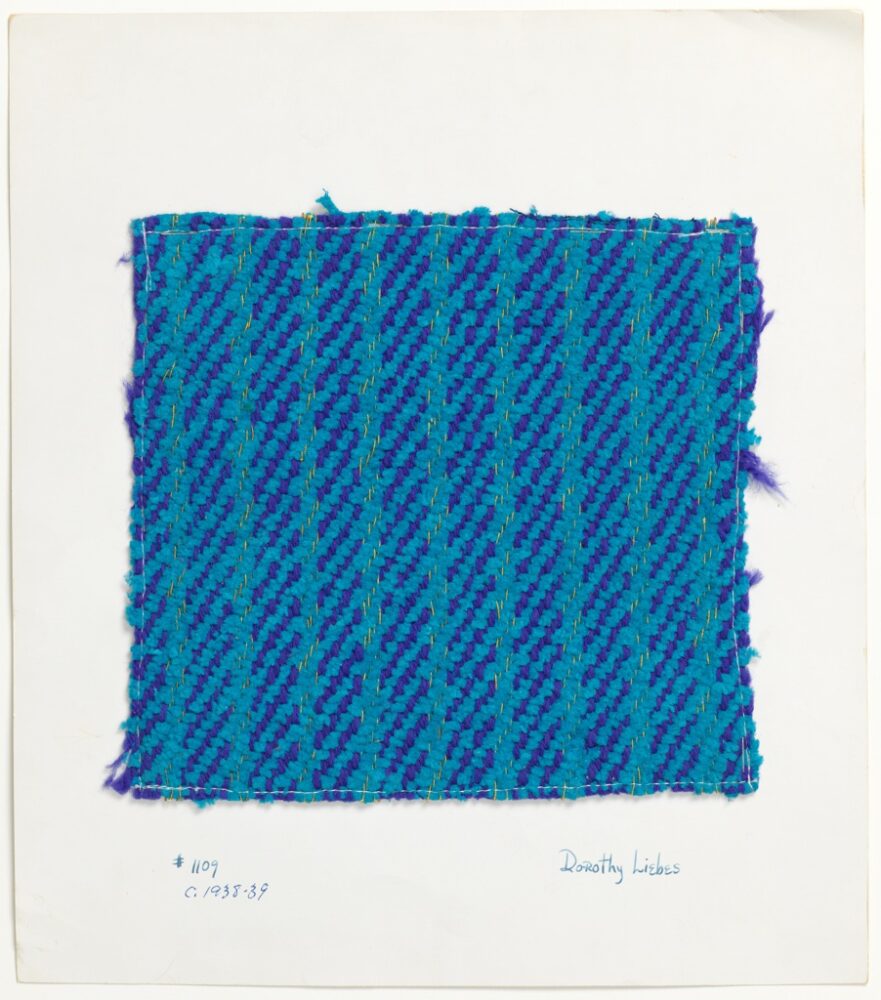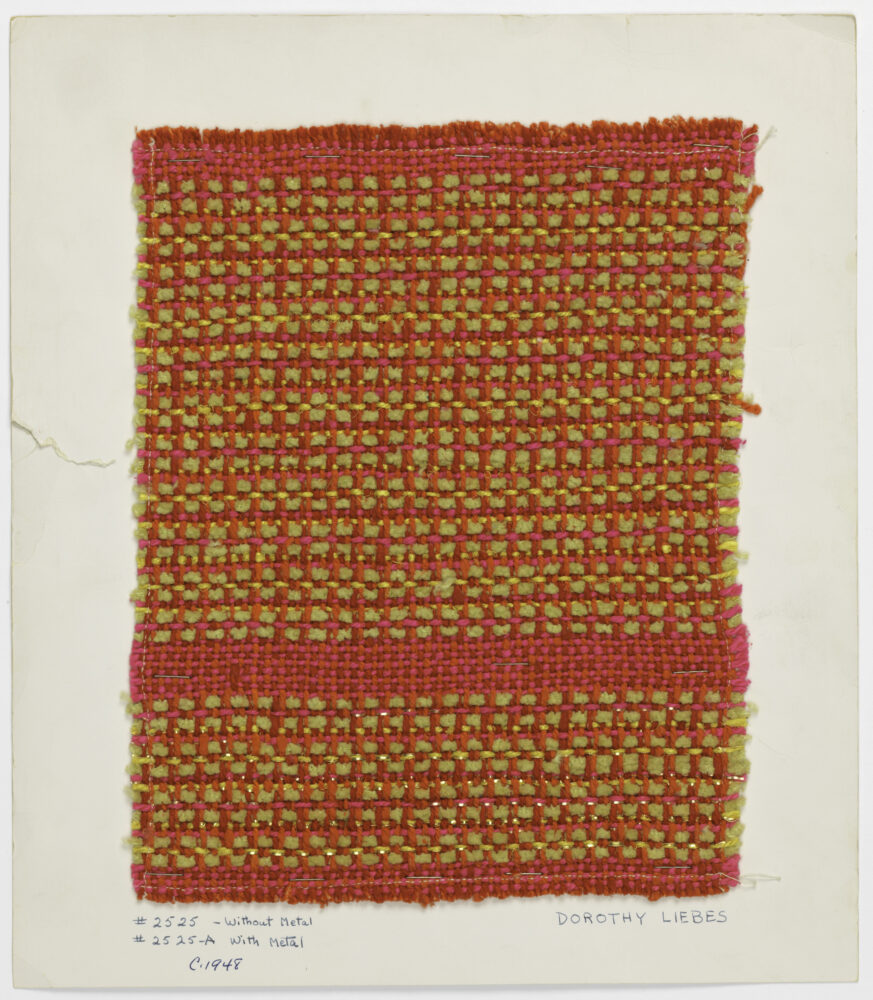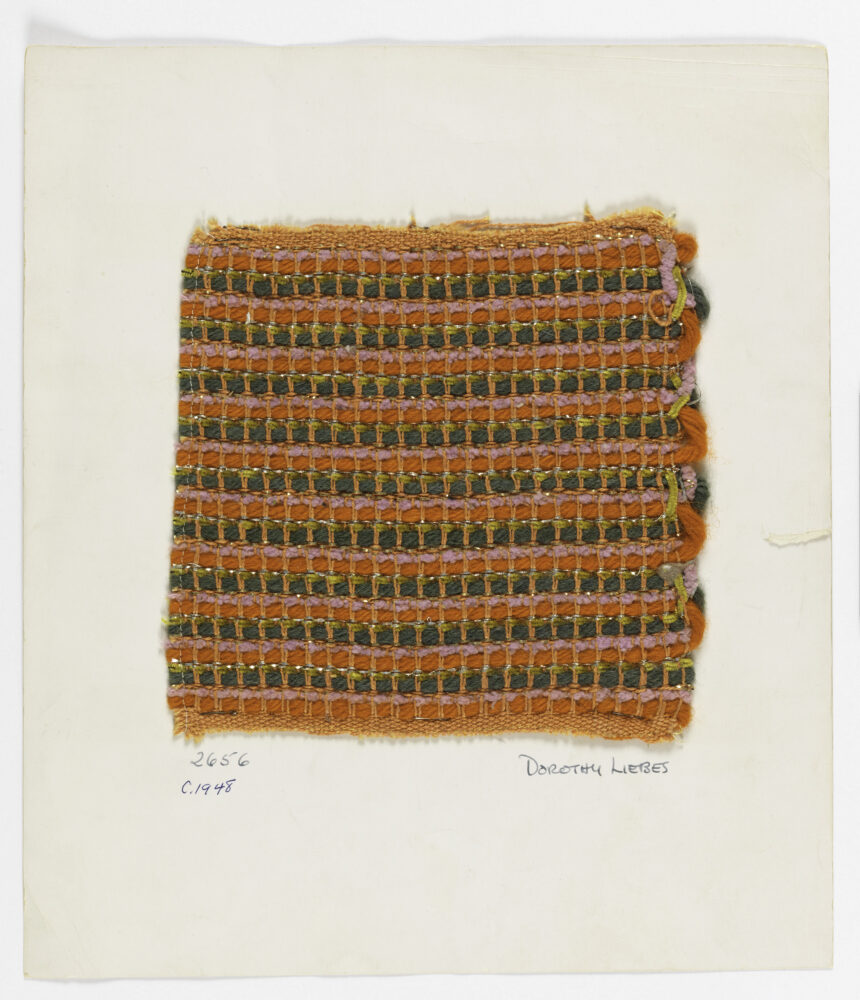“Color is the magic of the aesthetic realm. It is the immediate eye appeal. It plays on the emotions. Its effect on human beings cannot yet be measured.”
—Dorothy Liebes, 1944 [1]
Dorothy Liebes’s daring and skillful color combinations attracted as much attention as her weaving. She served as a color stylist to a dozen firms, devising color ranges for everything from tablewares to swimsuits. The design press regularly sought out her color opinions and predictions. Her most often repeated advice? “Don’t be afraid of color.” [2]
“My life has been lived in a consciousness of color,” Liebes mused in her 1946 article “Color as I See It.” [3] She often spoke of a color sensibility as innate—something that could not be learned— but, trained as an artist, she was well versed in color theory. Her writings suggest that she was familiar with the work of Faber Birren, noted for his studies of the psychological effects of color, especially in the therapeutic setting. Liebes had observed these effects while serving as art director of the American Red Cross Arts and Skills Corps, which provided craft instruction as rehabilitative therapy for injured World War II soldiers. She owned Baumann’s Color Guides, translated from German and distributed by fellow California designers Gladys and Gustave Plochere. [4] In her work with Goodall, she used the Color Harmony Manual developed by the Container Corporation of America, which she described as “exceedingly helpful,” warning, however, that you could “go just as wrong using this theory as you could without it” if you didn’t “ already have wonderful color ideas.” [5]
Over the course of her long career, Liebes designed textiles in every palette, from the silvery celadon greens of the 1930s to the eye-popping fuchsias and oranges of the 1960s. But she became famous for what were called “clashing colors”—close chromatic combinations also known as “analogous” color schemes. The “Liebes look” meant saturated colors in vibrating juxtapositions like her signature blue-and-green combination that caused a sensation in the 1950s. The look also featured yarns of different character as well as color—thick and thin, lustrous and dull, nubby and smooth—to create depth and complexity. “After all,” Liebes wrote, “it isn’t the color, but the combination of colors and values.” [6]
Liebes’s weaves were often further enlivened by flashes of metallic. “Metals extend the weaver’s color palette. They provide tonal qualities peculiar unto themselves and, judiciously used, highlight and dramatize the other colors in the cloth.” [7] Lurex was among the many products for which she styled colors, enabling her to move the palette of metallics beyond gold, silver, and copper into bright jewel tones of emerald and sapphire, chalky pastels, and black and white. Tone-on-tone metallics added to her repertoire of glossy bouclés and velvety chenilles gave Liebes’s palette an even greater depth and saturation, as though every facet of a color could be experienced at once.
Notes
[1] “Tomorrow’s Weaving,” Woman’s Day, April 1944, 32.
[2] Dorothy Liebes, “How to Use Color,” How to Decorate Your Home (Chicago: Sears, Roebuck and Co., 1972), 2.2.
[3] Dorothy Liebes, “Color as I See It,” House & Garden 90, no. 3 (September 1946): 118.
[4] Paul Baumann and Otto Prase, Baumann’s Color Guides (Los Angeles: Gustave Plochere, 192?). The publication is mentioned in Jud Williams (of Goodall Worsted Co.), letter to Dorothy Liebes, May 5, 1943. Series 5, Box 9, Folder 37, Dorothy Liebes Papers, Archives of American Art, Smithsonian Institution, Washington, DC. The Plocheres published their own color system in 1948.
[5] Dorothy Liebes, letter to Dr. Harvey Thornburg (of Goodall), January 26, 1943. Series 5, Box 9, Folder 36, DLP. Egbert Jacobson, The Color Harmony Manual and How to Use It (Chicago: Color Laboratories Division, Container Corp. of America, 1942).
[6] “Inter view with Dorothy Liebes: American Fabrics Poses 8 Questions,” American Fabrics, no. 23 (Fall 1952): 61.
[7] Liebes, in Michelle Murphy, “Trends in Woven Materials,” New York Times, October 3, 1948.
